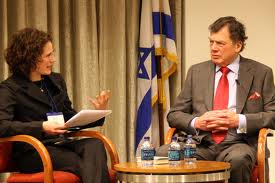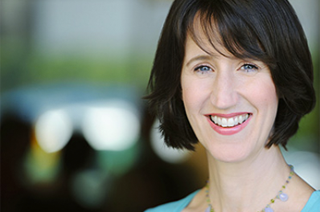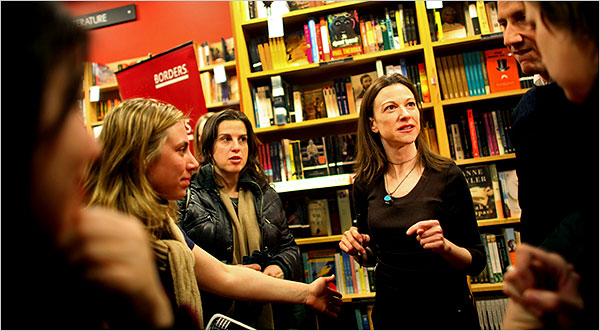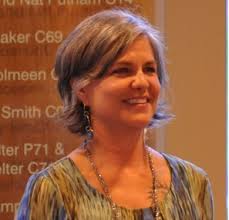This gallery contains 0 photos.
Olitzky told me that many in the organized Jewish community are beginning to recognize...Ecclesiastes as the strangest book in the Bible?
This gallery contains 0 photos.
Ecclesiastes is the strangest book in the Bible or, at any rate, the book...The NFL Has Been Blindsided about Change
This gallery contains 1 photo.
The N.F.L. was blindsided by the magnitude of the Dolphins’ bullying scandal and by...Women bring a different perspective to investing
This gallery contains 1 photo.
Money has long been a traditionally male domain, sure, but historically so were medicine...“‘I work a lot with stay-at-home dads and men who work from home,’ he said, ‘and one thing I hear a lot is that, in theory, they’re really happy balancing flexible work with stay-at-home responsibilities…'”
Ian Kerner, a sexuality counselor and the author of “She Comes First,” sees couples struggle to find a ratio that works. “I work a lot with stay-at-home dads and men who work from home,” he said, “and one thing I hear a lot is that, in theory, they’re really happy balancing flexible work with stay-at-home responsibilities, while their wives are out working full-time in corporate jobs. But, at the same time, a common complaint is that Mom comes home and feels guilty for being away all day, and so much time has to be made up connecting with the children, who take first priority, that these dads feel lost in the mix.” In many couples, Kerner says, the wives start to feel disgruntled because their husbands get to see more of the kids, and the husbands, whose wives are controlling more of the spending, start to feel “financially emasculated.” Sometimes, he says, a vicious cycle begins: The husband feels marginalized and less self-confident, which causes the wife to lose respect for and desexualize him. Under these circumstances, neither is particularly interested in sex with the other.
Lori Gottlieb, “The Egalitarian-Marriage Conundrum”, The New York Times Magazine (9 February 2014), 33.
“Gender is no longer simply code for women or the feminine and its scholarship is no longer the province of females or even self-declared feminist”
Gender is no longer simply code for women or the feminine and its scholarship is no longer the province of females or even self-declared feminists. Indeed, gender has become a rather notably ambiguous signifier. Where this is acknowledged rather than covered over by tidy definitions, the ambiguity that attends the term is rendered productive, I believe.
Virginia Burrus, “Mapping as Metamorphosis: Initial Reflections on Gender and Ancient Religious Discourses”, in Mapping Gender in Ancient Religious Discourses, ed. Todd Penner & Caroline Vander Stichele (Leiden & Boston: Brill, 2007), 2.
“Orthodox rabbis rarely made any comments on the events unfolding on the American scene in the 1920s or early 1930s”
…Orthodox rabbis rarely made any comments on the events unfolding on the American scene in the 1920s or early 1930s. They generally ignored race, immigration, pacifism, isolationism, the League of Nations, lynching, Sacco and Vanzetti, civil liberties, the Klan, racial segregation, industrial (textile, railroad) strikes, Einstein’s theory of relativity, modern technology, modern war, Prohibition, economic warfare, Bolshevism, political events in Europe, and the Depression. Only with the rise of the Nazis and the 1939 White Paper that drastically curtailed Jewish immigration to Palestine, did European events become part of their sermons. Instead, they talked about Torah (which, all Orthodox rabbis agreed, God had revealed verbally to Moses at Mt. Sinai), commandments (“word of God,” they all agreed), ceremonies, customs, observances, rituals, holidays, festivals, and themes associated with the calendrical events in the Jewish/Judaic year. The scientific and philosophical literature of their day was useful primarily to support the conclusions of Judaic values and beliefs.
Marc Lee Raphael, The Synagogue in America: A Short History (New York & London: New York University Press, 2011), 90.
“Mapping, whether viewed from the perspective of cartography mathematics or cognitive science, is an act of translation—or, perhaps better yet, of transformation”
Mapping, whether viewed from the perspective of cartography mathematics or cognitive science, is an act of translation—or, perhaps better yet, of transformation. A mapping constructs a relationship between two domains (sometimes referred to by theorists of conceptual metaphors as the “source” and the “target”); put differently, it generates a second codomain (as mathematicians name it) out of the potentialities of an originary domain, by establishing the conditions for metamorphosis. Mapping is, then, an inherently creative process, giving rise to novel entities and insights. Precisely to the extent that the map becomes the territory, mapping generates whole new worlds of image, symbol or text.
Virginia Burrus, “Mapping as Metamorphosis: Initial Reflections on Gender and Ancient Religious Discourses”, in Mapping Gender in Ancient Religious Discourses, ed. Todd Penner & Caroline Vander Stichele (Leiden & Boston: Brill, 2007), 1.
“In contrast to the interwar years, Conservative synagogues had, by the 1950s, rather clearly delineated themselves as a branch of Judaism quite distinct from Orthodoxy”
This gallery contains 0 photos.
In contrast to the interwar years, Conservative synagogues had, by the 1950s, rather clearly...“At one time, it was deemed a good thing to have many Jewish organizations…”
At one time, it was deemed a good thing to have many Jewish organizations, as that meant, it was said, that more Jews would be involved in Jewish life. The trouble with that theory is that organizations chew up money and, even when they no longer have much relevance, they never die. The paid professionals see to that.
Edgar M. Bronfman and Beth Zasloff, Hope, Not Fear: A Path to Jewish Renaissance (New York: St. Martin’s Press, 2008), 174.





